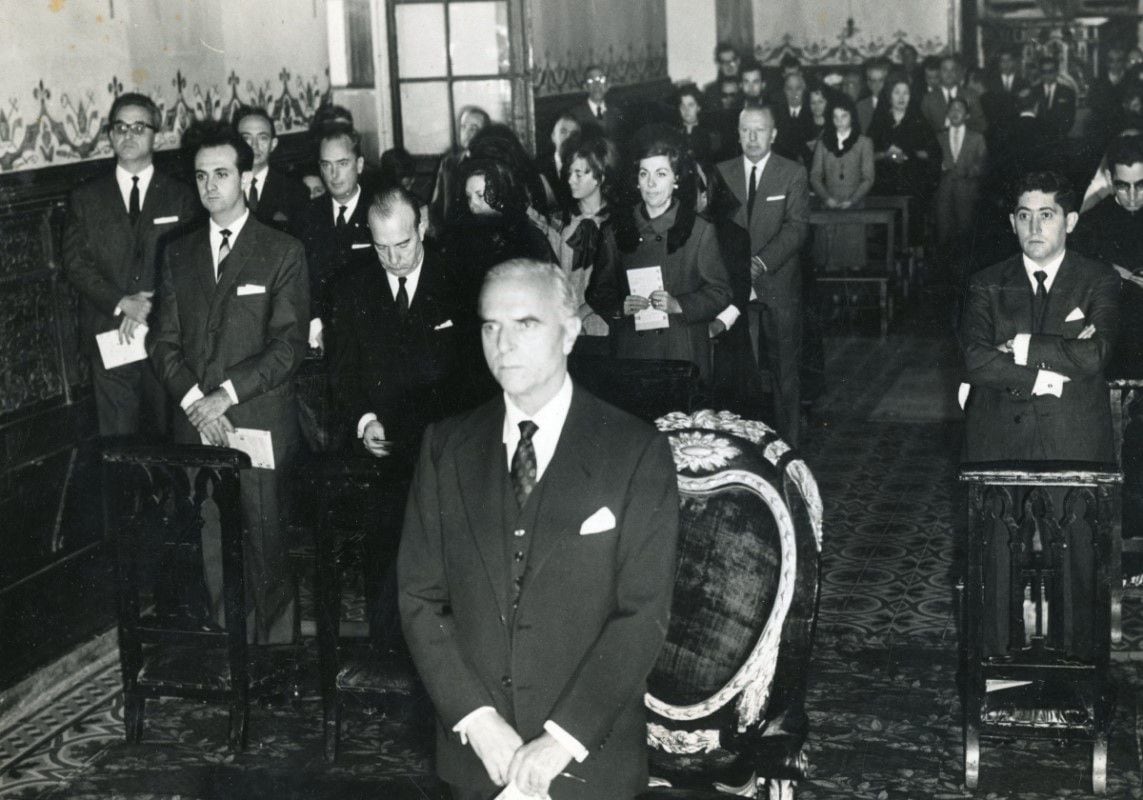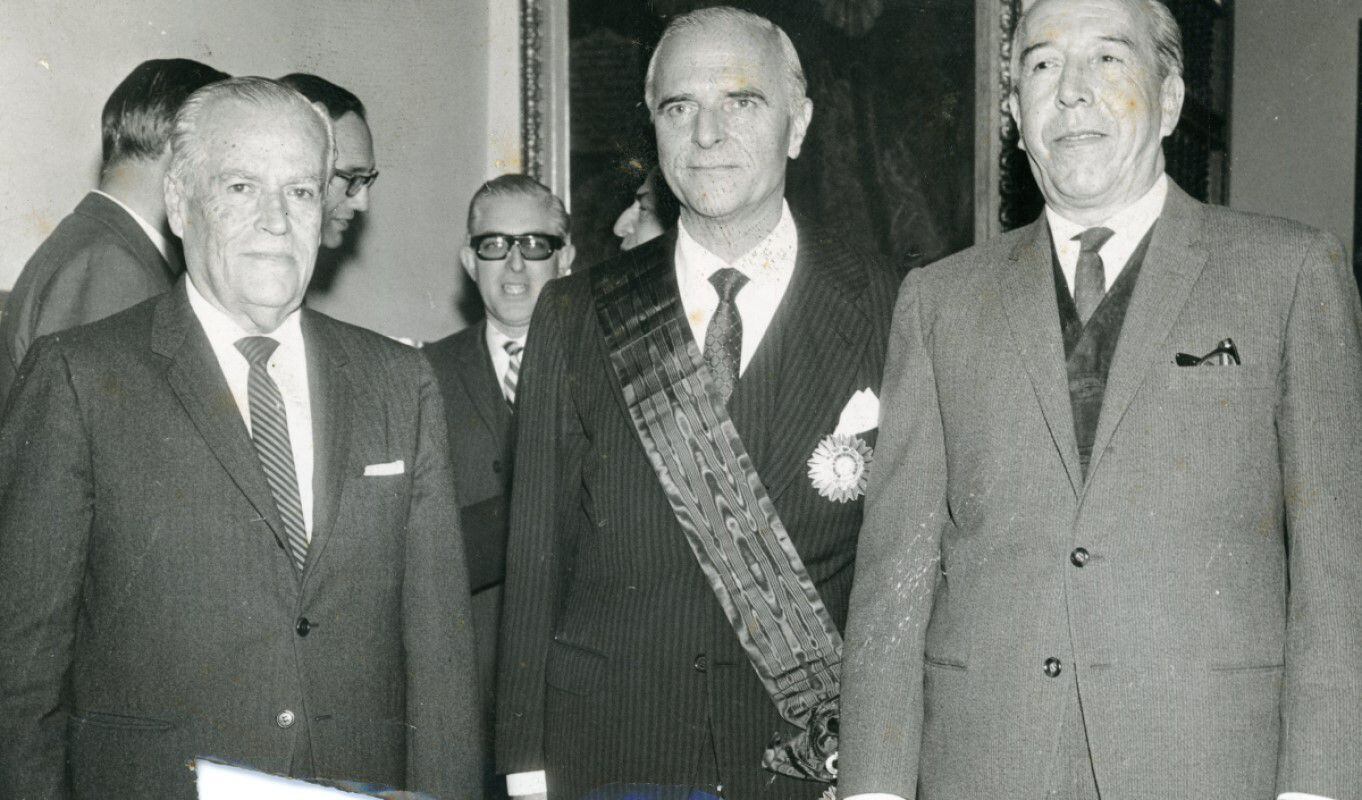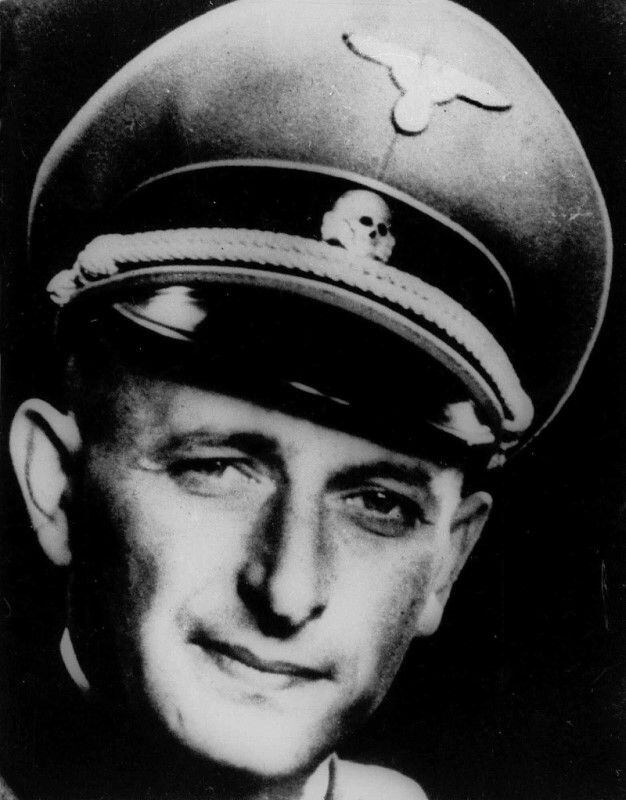Angel Sanz Briz saved the lives of more than 5,000 Jews, handing over documents and offering refuge in Hungary, while serving as Charge d’Affaires of the Franco government.
READ ALSO | Campo de Marte: What great events occurred in the great park of Lima throughout its history?
On June 8, 1964, Ambassador Sanz Briz was the special guest at a farewell banquet in New York, where he had arrived two years earlier. His new destination: Lima, in South America.
On June 23 he was already in the Peruvian capital and President Fernando Belaunde welcomed him. Upon handing over his credentials, the peninsular diplomat expressed his admiration for the reforms that Peru was executing and for his “faithful friendship towards Spain in difficult hours.”
His impeccable management in our country ended in 1967. On June 14 of that year, the Grand Cross of the Order of the Sun of Peru was imposed on him, the highest decoration of our nation.
The president of the Council of Ministers, Manuel Becerra de la Flor, as well as all the accredited ambassadors in the country were present at the ceremony held at the Torre Tagle Palace. The man who was leaving Peru had left a trail of humanity in his already long diplomatic career, although few knew about it.
Jorge Vásquez Salas, Minister of Foreign Affairs of Peru, highlighted the personality of Ambassador Sanz Briz and the brilliant work he had done to bring Spain and Peru closer together. The distinguished diplomat highlighted three moments of his stay in Lima: the tribute that the Government of Peru paid to Francisco Pizarro on the island of Gallo, the centenary of the Combat of Dos de Mayo and the presence of President Fernando Belaunde on the Spanish school ship ” Juan Sebastián Elcano ”.
“El Angel de Budapest”
In 1943, the Aragonese Angel Sanz Briz arrived in Budapest as charge d’affaires of the Spanish Francoist government, while the cannons thundered throughout Europe and the hordes of Adolfo Hitler resisted before the advance of the Allies.
In March 1944, the Nazis occupied Hungary after being warned of rapprochement between the Budapest government and the Allies. This allows the German forces to extend their extermination policy on the Jews, displacing even Adolf Eichmann, the organizer of this systematic massacre of human beings. Some 800,000 Jews were then living in Hungarian territory and their lives were threatened from one moment to the next.
After the hunt for the resident Jews by the Nazi troops, Sanz Briz informed his government of the genocide that was underway, since he had already received information about what was happening in Auschwitz. To try to avoid the massacre, he obtained authorization from his country to provide Spanish passports and “letters of protection” to Sephardic Jews. These were Hebrew citizens whose ancestors had lived in Spain.
Sanz Briz relied on an old decree of 1925 that validated those documents, although the norm had lost its validity in 1931, a detail that the Spanish diplomat wisely concealed.
Aware that such a risky operation could not be carried out by himself, he undertook to organize a network of men of good will, among whom were the Swede Raoul Wallemberg, the apostolic nuncio Angelo Rota, the Italian Jorge Perlasca and the Swiss consul Carl Lutz, as well as many other diplomats.
Sanz Briz, in a meticulous and tenacious work, in addition to being risky, delivered thousands of documents to Jewish Hungarian citizens, who saw every day how through violent raids and relentless persecutions, the invading army captured men, women and children to send them to the death camps.
Under the perennial threat of being captured and executed, Sanz Briz vehemently engaged in the issuance of these papers, which became a “lifeline” for thousands of people. Likewise, he did not want to put his wife Adela at risk, whom he asked to return to Spain.

Hounded by Eichmann
Not a few were the times that the so-called “Angel of Budapest” was interrogated by the invading German authorities, who persistently asked him for these documents. Sanz Briz relied on the fact that he was doing something perfectly legal with Sephardic citizens, officially recognized as Spanish by Francisco Franco himself.
Adolf Eichmann himself faced it, but could not break the arguments of the Spanish diplomat. The truth is that the Sephardic residents of Hungary were few. But Sanz Briz was in charge of “multiplying” them by thousands before the Nazi occupation officials.
This enabled him to save some 5,200 Jews from certain death. With the aforementioned documents the “Sephardic Jews” could move with a certain tranquility through the Hungarian streets. However, the harassment of the Germans was such that this forced to look for some additional alternative.
Sanz Briz then decided to create special shelters for “his Jews” which he called “Annex to the Legation of Spain. Extraterritorial building ”. In these residences the Jews found a space of certain tranquility, while the Spanish diplomat managed to send them to Switzerland, Spain or other countries.
In November 1944 the Soviet army reached the borders of Hungary, so the Spanish government decided that it was time for Sanz Briz to leave Budapest. And so it happened.
In his country Sanz Briz was neither congratulated nor rewarded. His work was ignored by the official entities. His diplomatic career continued in other countries, including Peru. He was also in The Hague, Brussels and Beijing, and finally in the Holy See, where he died on June 11, 1980. His daughter Angela once declared: “He did what he thought was his duty.”
In the late 1980s, after his death, his widow received the title bestowed on her husband as “Righteous Among the Nations.”

On-line shop: We remind you that we have illustrations, photos and historical pages of El Comercio that you can easily request through a simple form located in our Virtual Store, at the following address: https://www.tiendaelcomercio.com/.
- A sacrifice that will not be forgotten: the story of Yonel Arroyo, the boy who became a hero for La Libertad
- Souvenir shops: a look at the Peruvian shopping centers that we evoke with nostalgia | PHOTOS
- When a well-known political party devised a plan for foreign troops to invade Peru
.

:quality(75)/cloudfront-us-east-1.images.arcpublishing.com/elcomercio/ZDWEY6KEL5ET5HG6CUARRSUUCE.jpg)





:quality(75)/cloudfront-us-east-1.images.arcpublishing.com/elcomercio/6ZIPC4MB2JDF7AVHYM45Y24AFI.jpg)


